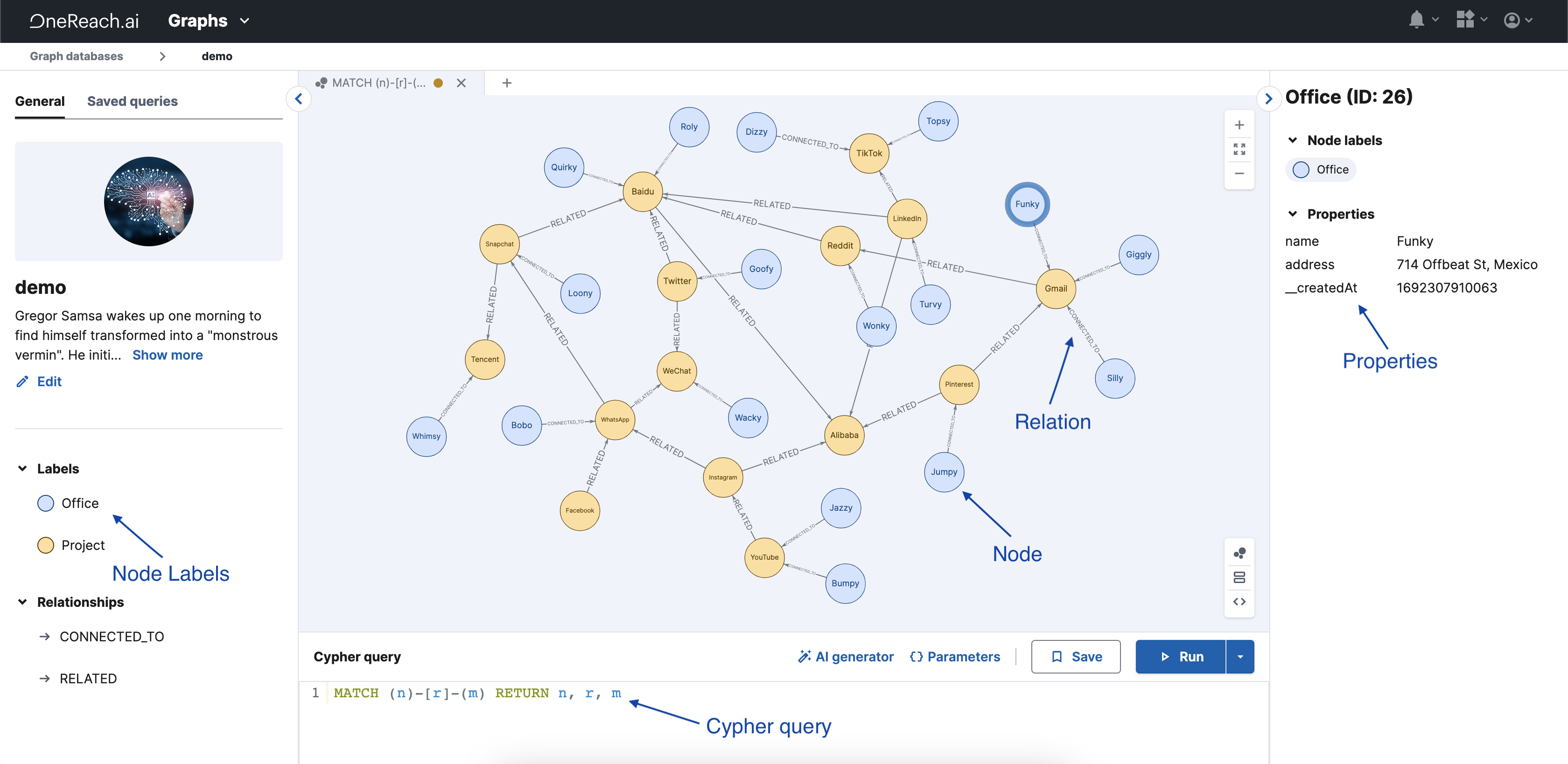Graph database
A Graph database is a unique database type where data is preserved in formats of nodes, connections, and attributes, diverging from conventional table-based structures. Its intricate web of interconnected data simplifies the comprehension and analysis of complex relationships compared to traditional databases.

Nodes
As the primary data representations in the Graph databases, nodes depict entities or instances such as individuals, items, or events. Essentially, they serve as the 'repositories' or 'carriers' of information, holding the keys to data sets.
Properties
Properties elaborate on nodes by offering additional descriptive data about them. For instance, for a node personifying an individual, the properties could encompass details such as the person's moniker, age, or geographical location.
Relations
Referred to as 'edges', these constituent parts of a Graph database connect nodes. They delineate the relationships between various nodes, providing a roadmap to decipher how different components are interlinked.
Node labels
Node labels are akin to assigning a class or genre to a node, offering added context to the data it represents. Examples could be 'student', 'educator', or 'institution', which could be labels for nodes in a database about an educational milieu.
Cypher query language
This is a bespoke programming dialect explicitly devised to interact with the Graph databases. It allows users to fetch and manipulate data in a comprehensible and easily digestible manner, acting as a linguistic interpreter that enables effective communication with the underlying database system.
You can find more about syntax and usage here